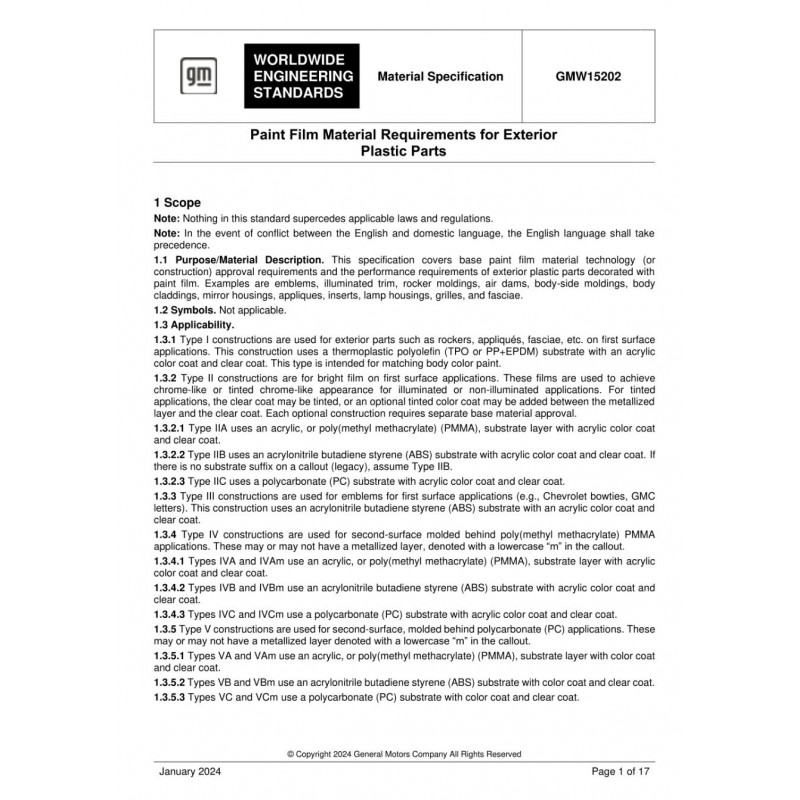- -55%
- New



Note: Nothing in this standard supercedes applicable laws and regulations.
Note: In the event of conflict between the English and domestic language, the English language shall take
precedence.
1.1 Purpose/Material Description. This specification covers base paint film material technology (or
construction) approval requirements and the performance requirements of exterior plastic parts decorated with
paint film. Examples are emblems, illuminated trim, rocker moldings, air dams, body-side moldings, body
claddings, mirror housings, appliques, inserts, lamp housings, grilles, and fasciae.
1.2 Symbols. Not applicable.
1.3 Applicability.
1.3.1 Type I constructions are used for exterior parts such as rockers, appliqués, fasciae, etc. on first surface
applications. This construction uses a thermoplastic polyolefin (TPO or PP+EPDM) substrate with an acrylic
color coat and clear coat. This type is intended for matching body color paint.
1.3.2 Type II constructions are for bright film on first surface applications. These films are used to achieve
chrome-like or tinted chrome-like appearance for illuminated or non-illuminated applications. For tinted
applications, the clear coat may be tinted, or an optional tinted color coat may be added between the metallized
layer and the clear coat. Each optional construction requires separate base material approval.
1.3.2.1 Type IIA uses an acrylic, or poly(methyl methacrylate) (PMMA), substrate layer with acrylic color coat
and clear coat.
1.3.2.2 Type IIB uses an acrylonitrile butadiene styrene (ABS) substrate with acrylic color coat and clear coat. If
there is no substrate suffix on a callout (legacy), assume Type IIB.
1.3.2.3 Type IIC uses a polycarbonate (PC) substrate with acrylic color coat and clear coat.
1.3.3 Type III constructions are used for emblems for first surface applications (e.g., Chevrolet bowties, GMC
letters). This construction uses an acrylonitrile butadiene styrene (ABS) substrate with an acrylic color coat and
clear coat.
You might also like